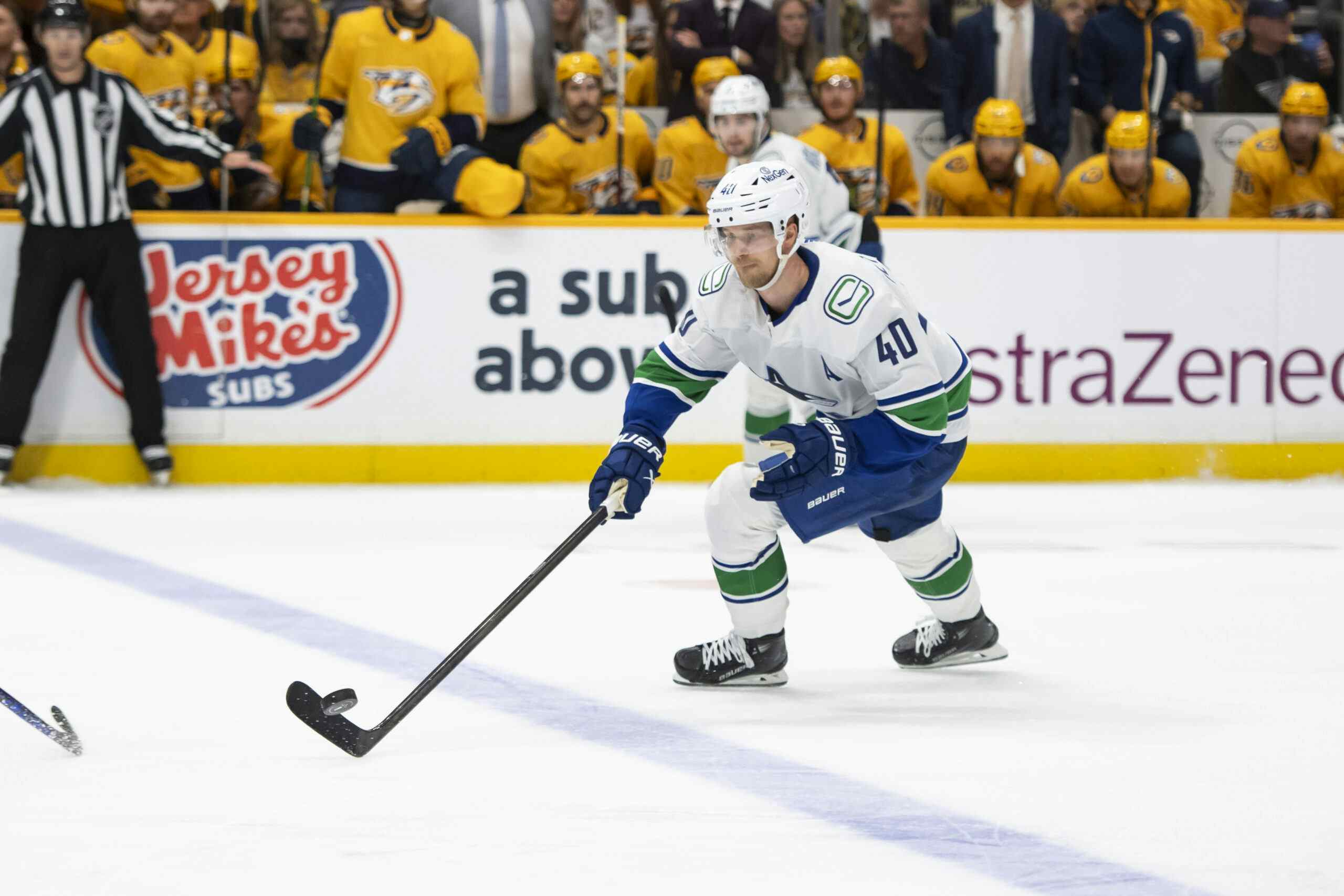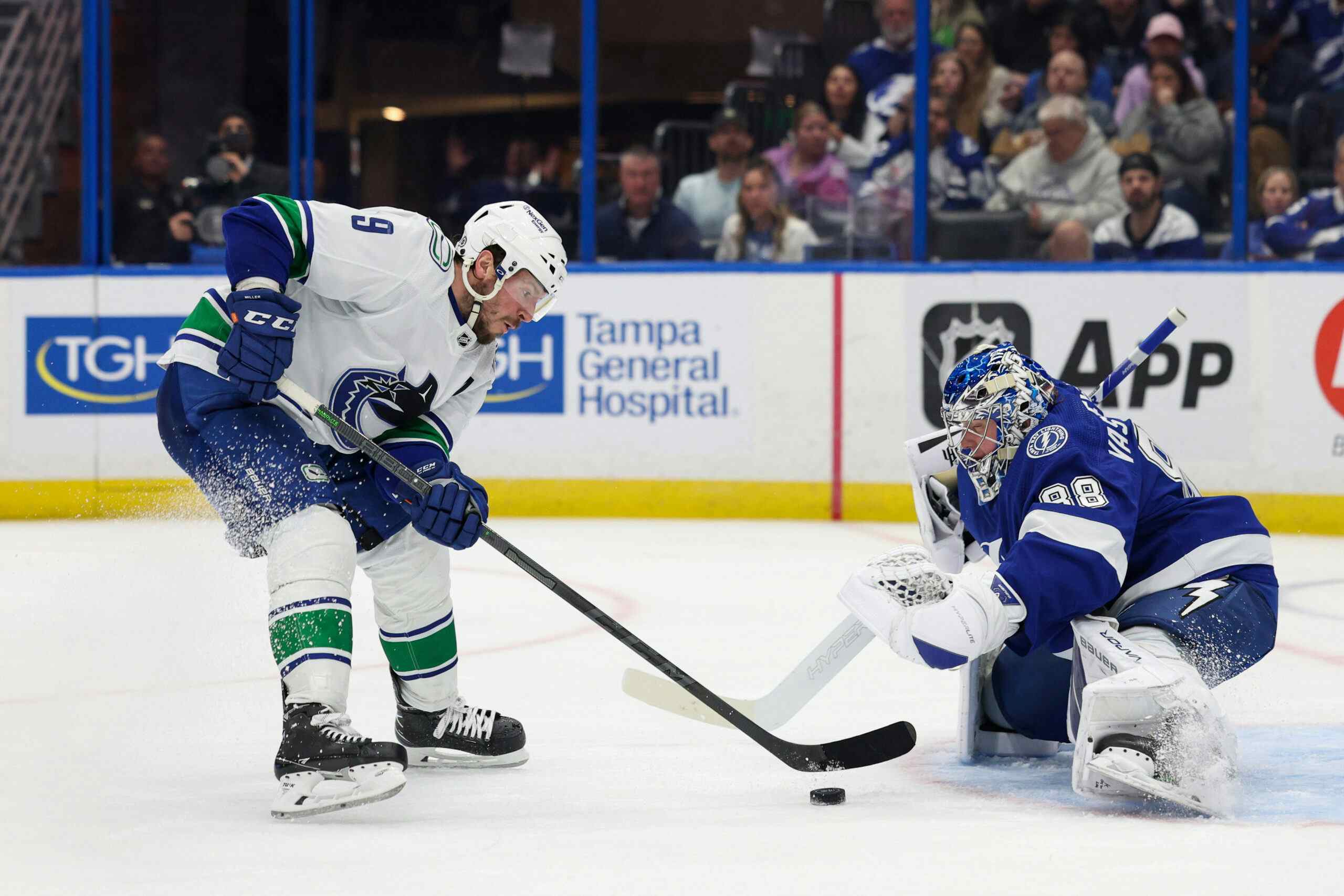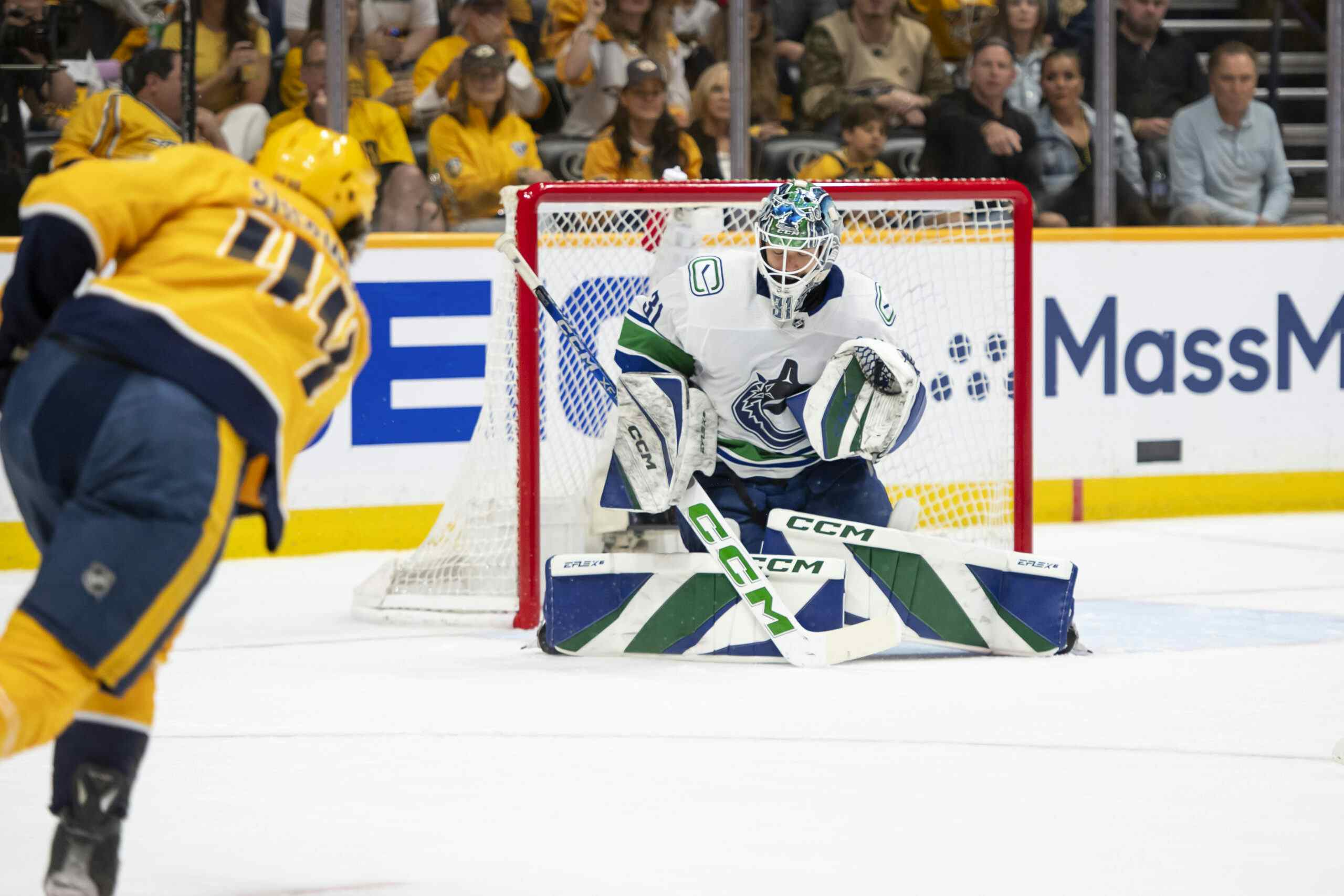Maximizing Returns on Vrbata Extend Past This Season
By J.D. Burke
8 years agoFor the better part of this season, the Sedins have skated alongside Jannik Hansen. Empirically speaking, the clumsy Dane offers the Canucks the best bet to maximize their return on the Twins and the evidence suggested as much well before they caught fire most recently.
This has left the estranged Radim Vrbata a refugee in the Canucks middle-six. To his credit, the Czech volume shooter has been highly effective in the face of unimaginably poor luck. Similar to Vrbata’s displacement from the top line last season, it’s also added much-needed scoring punch throughout the remainder of the Canucks lineup.
Given the Canucks publicly ascribed goal of remaining competitive in the face of a daunting rebuild, there’s no arguing the logic behind separating Vrbata from the Twins. There’s a flip side to this decision, though, which could potentially lead to unwanted consequences in the not-so-distant future.
As the discussion surrounding this club strays from the more granular concerns regarding usage and deployment, it becomes increasingly murky. The Canucks wants to win now but build towards the future. As a coach, there’s little if anything that can be done towards serving the latter of these masters; nothing which will be overly influenced by lineup decisions. Discussing which players figure into the short and long-term plans, however, represents an entirely different set of circumstances.
In the handling of Vrbata’s final season as a Canuck, this paradigm is broached. Vrbata is in the final year of his two-year contract with the Canucks, which carries an AAV of $5-million. It’s widely regarded as one of the better moves made by Jim Benning, and with good reason. In signing Vrbata to this most tame of contracts, the Canucks secured a first line talent with the ability to contribute positively towards the short-term health of the franchise in a large way.
Whether by accident or design, it’s becoming increasingly possible that they’ve also stumbled upon a valuable asset towards the future as well. The trade deadline is becoming an increasingly seller friendly venue and the Canucks have a first line talent, on a short-term, team-friendly contract that could yield a sizeable return if shopped.
In a world where Antoine Vermette’s skeleton yields a first-round selection and a blue chip defenceman, imagine the worth of a top-flight player with a favourable and genuinely deserved reputation? One might reasonably expect a huge return, which might satisfy the Canucks half-affixed gaze to the future.
To that exact end, they should do everything in their power to increase Vrbata’s value in the lead-up to this year’s trade deadline – not entirely dissimilar to what they pulled with Cody Hodgson, many moons ago.
Returning Vrbata to the Sedin’s right flank offers them the best opportunity to do so, at a manageable, if marginal impact to their short-term aspirations. The trio appeared to develop instant chemistry last season and his departure was more complimentary than punitive, anyways. “Here, Vrbata, just go ahead and save Nick Bonino’s season” and the like.
A cursory glance at the threesome’s WOWY statistics are telling of a dominant first line, controlling well north of 55% of goals and shot attempts when playing together. I’ve no quarrel with the thought process behind the Union of Kalmar line, but I’d hardly call making the switch back to Vrbata instead of Hansen a downgrade – certainly not one worth griping about, anyways.
Based on my math and using Daniel Sedin as a proxy for his play with both twins, it appears as though Vrbata is netting .95 iG/60 in this role. Adjusting these numbers based on Vrbata’s even strength ice-time over the course of last season, that’s good for 16 even-strength markers. If we run this same experiment based on Vrbata’s play away from the twins, there’s a healthy slide down to roughly .61 iG/60, good for 11 even-strength goals.
It’s a fairly rudimentary test and one might easily counter with the fact that no two, or three players are inseparable over the course of a season. All the same, I think that the difference is striking enough that it bears mentioning.
Separate the Canucks stated goals, the stark reality is that every move should be made towards advancing the health of this club when they can realistically be expected to contend again. Pardon my optimism, but I can’t imagine that happening any sooner than four, maybe five years from now. At that juncture, 38-year old Radim Vrbata likely can’t contribute to the extent that his price tag might warrant. The draft pick or prospect the Canucks might expect in return, most certainly could.
Now, in the age of advancing information the NHL is still very much a results-based industry. Generally speaking, managers pay based on what the player in question has contributed, rather than what he can contribute. It’s bizarre and weird, but oh well. A Vrbata with 16-even strength goals is likely a 25-30 goal scorer in total. In theory, this type of asset should yield a kings ransom.
On the other hand, Vrbata with 11-even strength goals is probably on the low end of the 20-25 spectrum. It’s not a huge difference, but it’s more than nothing.
Then again, maybe the Canucks just spit in the face of logic and sign him to a lucrative extension.
Recent articles from J.D. Burke





